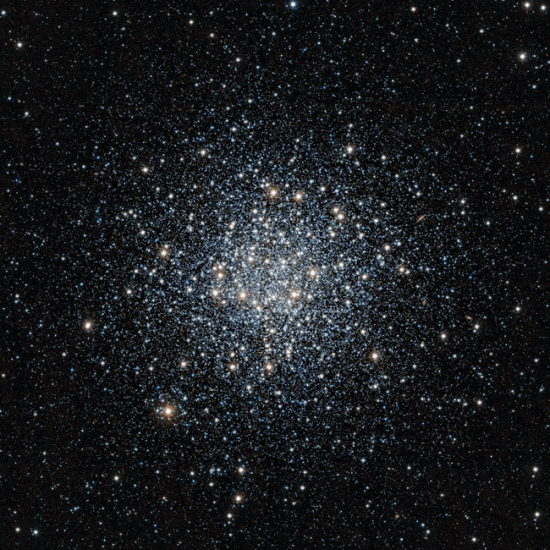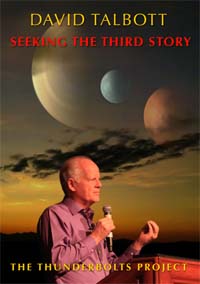
This striking view of the globular star cluster Messier 55 in the constellation of Sagittarius (The Archer) was obtained in infrared light with the VISTA survey telescope at ESO’s Paranal Observatory in Chile. This vast ball of ancient stars is located at a distance of about 17 000 light-years from Earth. Credit: ESO/J. Emerson/VISTA. Acknowledgment: Cambridge Astronomical Survey Unit
Oct 25, 2012
Spherical stars in spherical arrangements
From a recent press release: “A new image of Messier 55 from ESO’s VISTA infrared survey telescope shows tens of thousands of stars crowded together like a swarm of bees…. One hundred thousand stars are packed within a sphere with a diameter of only about 25 times the distance between the Sun and the nearest star system….” It sounds claustrophobic. But if we were to construct a scale model of the cluster with the distance between the Sun and the Earth represented by one inch, the stars would be specks of dust 1/100th inch across spaced two miles apart. The density is only about twice that of the solar neighborhood. These are indeed distant and tiny bees.
The press release also parrots the popular myth that “globular clusters are held together in a tight spherical shape by gravity.” A system of bodies orbiting in a disk around a central mass is not stable for more than two bodies; a spherical system orbiting under the influence of their collective mass will be chaotic (and not in the good sense). Then there’s the additional problem of getting a spherical halo of globular clusters to orbit a galaxy with its central mass modified by a distributed disk of mass (not to mention a hypothetical halo of dark matter to explain the constant velocities of disk stars). How can it maintain the constant velocity of disk stars but stable spherical orbits of globular clusters?
That the stars are old is another artifact of gravity theory: Astronomers presume that hydrogen is primordial. The presumption is arbitrary, made only because hydrogen is the simplest element. They further presume that it fuses to heavier elements in nuclear-furnace stars because stars must be isolated if gravity rules. Then they presume that explosions of stars scatter the heavier elements into later stars (because gravity rules out other mechanisms).
In the Electric Universe, the “starting” mix of elements for stars is unknown. A Bennett pinch concentrates elements into a spherical plasmoid, sorting elements into shells with hydrogen on the outside. Increasing current density generates and powers glow- and arc-mode layers (a star) with fusion occurring at the photosphere (the anode-tuft layer, not the “surface”). Because heavier elements build up at the photosphere as the star ages, hydrogen stars are the youngest, not the oldest.
Galaxies in a plasma model form in a pinch between interacting Birkeland currents: The first stars form in each current as it rotates around the other at constant velocity, trailing spirals of constant-velocity stars. Then plasma builds up in the “sump” between the currents, forming the nucleus or bulge. Finally, globular clusters form as pinches in “leakage currents” around the primary galactic pinch: The smaller currents and voltages result in “low energy” glow-discharge red stars that produce little fusion and few heavier elements.
Gravity was a useful explanatory concept in its time, just as the thermodynamics of steam was useful in the early industrial age of gas and coal. But space-age observations have brought plasma down the string of Ben Franklin’s kite: It’s time to acknowledge that the thunderbolt steers the universe and that electricity is the key to understanding it.
Mel Acheson
Now Available – Seeking the Third Story DVD

2 Lectures by David Talbott
According to author David Talbott, all of human history can be seen as just two stories.
First, came the story of ancient mythology, when towering gods were said to have ruled the world. Then came the story of science, emerging from a growing distrust of the myths and a new emphasis on direct observation and reason.
But a third story is possible, according to Talbott, one that sees the underlying provocation of the myths in extraordinary electrical events occurring close to the Earth. To be believed, a third story must be more coherent and more meaningful than either archaic religious mythologies or the modern mythologies of popular science.












